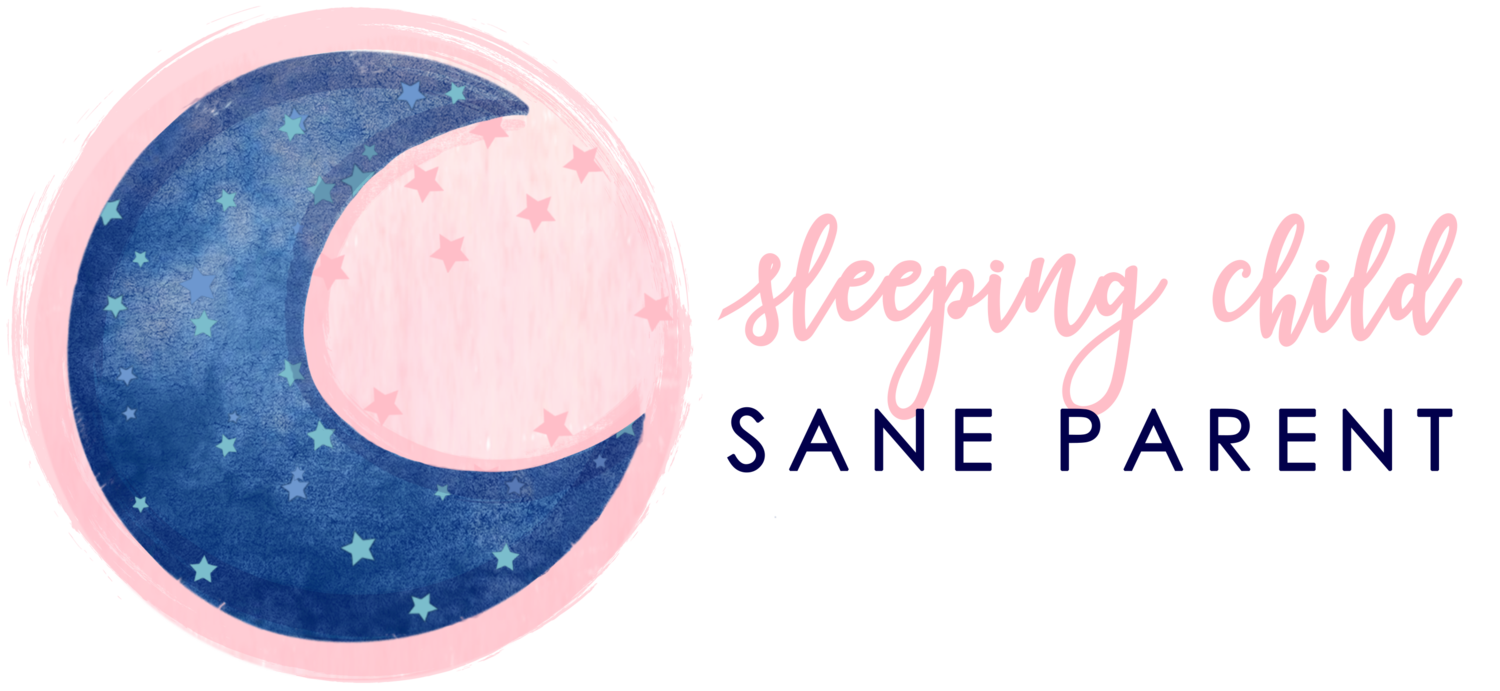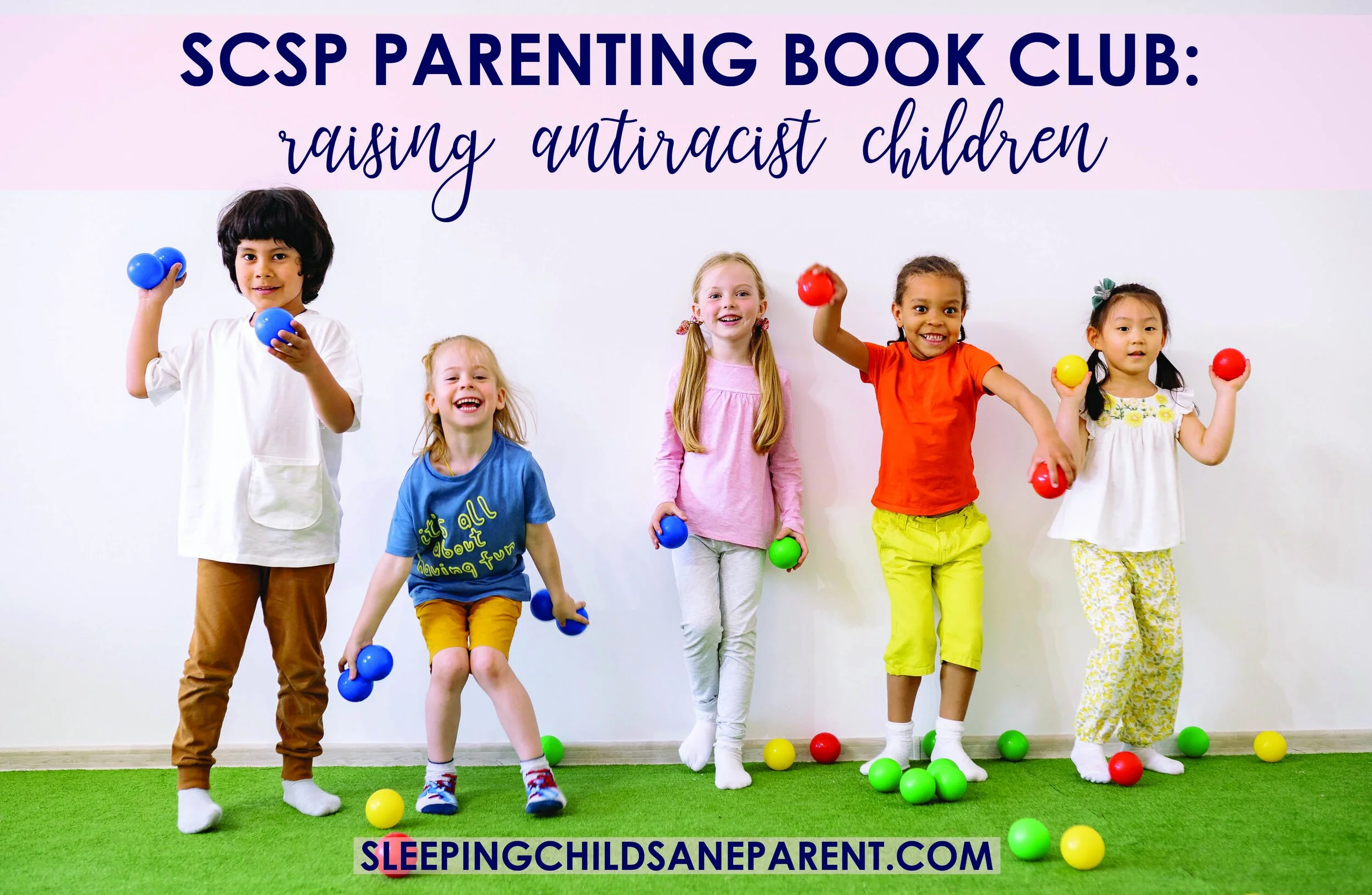New to the Sleeping Child, Sane Parent Parenting Book Club? Start here!
Raising Antiracist Children, by Britt Hawthorne
Antiracism has been a hot topic for the last few years, and it was one of the first topics I thought of for book club as I was planning this year’s books (at the end of last year). However, after asking Jasmine Bradshaw if there were any good parenting books on the subject, she said there weren’t yet! Luckily, she knew that Britt Hawthorne was publishing a book this year, and that’s how this book got on the list!
I’ve felt like I don’t know where to start with becoming antiracist myself, let alone raising my kids to be antiracist. I’ve never thought of myself as racist, but am I antiracist? One thing I loved about this book is that Hawthorne says antiracism “isn’t a destination, it’s a lifelong path.” And this book is an excellent resource to get started on that lifelong path.
I loved the concrete ideas Hawthorne provided, as well as the way she helped me see things in a new way. I’ve learned that one of the main issues that leads to racism and bias is that we have these thoughts passed down from generation to generation, and we don’t even realize we should question those thoughts and ideas — until a book like Hawthorne’s. While I still have a long way to go in my lifelong path to antiracism, I’m grateful for Hawthorne’s work in helping me get started! Here are some of my top takeaways from her book.
Antiracism is about Caring
“We start to build expectations that we all need self-care, that we must be willing to think about and help one another, and that our community is worthy to be taken care of by us.” (emphasis added)
A powerful idea from this book is that, at its core, antiracism is about caring, and caring enough to act. Although it’s a simple idea, it can be a little overwhelming to know how to act, but I loved that Hawthorne discussed a simple way that she helps her family build this value of caring. Each day during family time, each family member discusses how they cared for themselves, others, and the environment.
If we take daily time to care for ourselves, others, and the environment, we’ll be taking the necessary baby steps toward improvement and change over time. And most of all, this type of focus helps US become who we want to be, even if the world around us isn’t changing as quickly as we’d like it to.
I find it interesting that “self-care” has been such a buzzword over the last decade or so, with many resources trying to define what self-care actually is, since apparently we don’t know what it is. If we can show our kids with these daily conversations that self-care can actually be super simple things, like exercising or getting dressed nicely, hopefully they won’t need endless internet discussion on the topic. We can also show our kids what it means to care for others and the environment when we make these things part of our daily discussions. As we do so, the caring behaviors become another natural part of life.
Start with the Powerful Stories
“It [is] imperative that our children know they come from a place of power and that they’re powerful before introducing stories of oppression. The message I’m sending to my children is that our culture is valuable enough to be centered.”
When I began my antiracist parenting journey a few years ago, I started by bringing picture books about Black people into our home. Unfortunately, many of the books I brought in focused on oppression and slavery. I did my best to explain to my then 4-year-old about that very sad part of America’s history, and how we don’t want to be people like that — no person is better than another, so we shouldn’t treat others like they’re better or worse than us. I did my best to teach her about this tricky subject, but at the same time, I felt like I wasn’t going about things the right way — I just didn’t know how else to do it!
When I read this section in Hawthorne’s book, my mind was BLOWN, like, DUH! People of color are just that — PEOPLE. People with stories of hardship and triumph, sadness and happiness, discovery and growth. And if we’re willing to spend just half a second of extra time, we can bring regular stories about all sorts of people into our kids’ awareness. Instead of automatically reaching for stories that mirror our own, or that are about people who look like us, spend that extra half a second looking for a book or movie about someone whose life looks a little different. They have incredible stories to tell, too, and THIS is how we bring in other viewpoints and ideas in a constructive and open way.
Then, later on, once we’ve spent the time sharing the powerful stories about people (real or fictitious), we can spend some time discussing the oppression, past and present, that people of color have gone through, why that’s not okay, and what we can do to right the wrongs in this area.
Do the Hard-but-Right Stuff
Antiracism calls us to live a life full of intentional acts, to come to new understandings and commit to new ways to live justly—not to repeat patterns of oppression.”
Plain and simple, antiracism requires work, just like most other worthwhile things in life.
The more I learn about seemingly random subjects, like zero-waste living or the food industry, the more I learn that basically nothing is simple and easy. It all requires learning about why things happen the way they do, who has contributed to making things that way, and what actions of ours can make any sort of difference. Antiracism, anti-bias, inclusivity — they all require that same sort of diligence.
Hawthorne calls attention to two obstacles to becoming antiracist — nostalgia (i.e. supporting racist companies etc. with our time or money because it’s something we once loved) and convenience (i.e. supporting big corporations because it’s easier than shopping local). We can use either of these as excuses, or we can do the hard-but-right stuff.
Hard-but-right stuff like figuring out the exact ways we might be biased or what “little things” we say that are actually microaggressions. Hard-but-right stuff like learning about which politicians actually support the things we believe in, and voting for them. Hard-but-right stuff like shopping in an intentional way that aligns with our values and considers the environment.
Once again, antiracism is a lifelong path, so I know for me personally, I won’t be making the changes I know I need to all at once. However, I want to be more intentional about choosing one new thing to focus on improving every so often, so that I can continuously be working toward aligning all parts of my life with my values. The more we learn, the more we can shine light on exactly which changes we need to make.
Honorable Mentions
Inclusivity is about making the world fit for everyone
“Encourage children to understand that their imagination can be used to reenvision the current world; they can completely redesign things to be more equitable, magical, and creative. Antiracist children can imagine about their neighbors, create new wondrous structures, and design places centered around inclusivity.”
Blame systems; help people
“As antiracists, we believe in collective care. We believe that all human beings deserve the right to shelter, food, water, and safety. We believe in blaming systems, not people. We believe in advocating for those that need our support against systemic injustices.”
Center all cultures and ethnicities
Society naturally centers whiteness, so it’s important to change that narrative in order to show all people as worthy and powerful. Do this with the movies you watch, books you read (and read aloud!), photos and art you put on your walls, crayons and colored pencils you supply, toys you purchase, and stories you tell. (I don’t have a quote for this item because these are areas that I actually feel pretty good about how we’re doing, so I didn’t mark pages that referenced these specific topics. However, I certainly agree with Hawthorne that these are important parts of bringing antiracism into our homes, so I wanted to be sure to mention this idea!)
If antiracism is a lifelong path, I think these items are a good place to get started. I still feel a bit overwhelmed when I consider the fact that there’s so much I still don’t know. However, I’m going to start with these ideals and continue to take baby steps from there. Hawthorne’s book will definitely be one that I revisit when I feel ready to take on a new challenge to become the next version of the antiracist parent I’m trying to be!
Click here to see the takeaways shared by Jasmine Bradshaw of @firstname.basis. Then check out all the amazing free resources Jasmine has to offer!
Check out this post to see all the other books we’re reading this year :)


